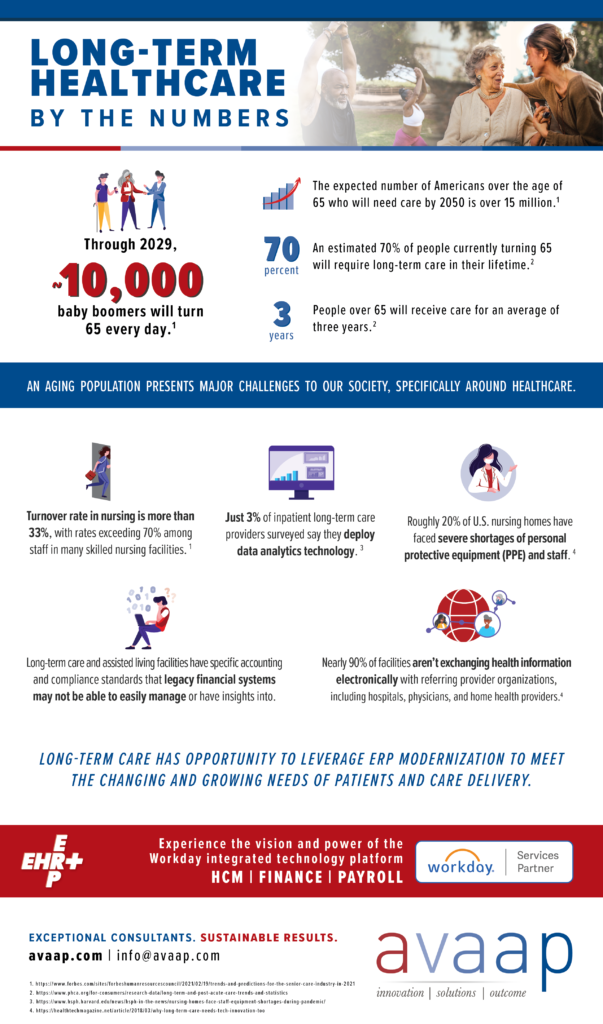The Push for Modernization in Long-Term Care
People are reaching retirement age at an exponential rate compared to ever before, with 10,000 baby boomers turning 65 every day through 2029. The expected number of Americans over the age of 65 who will need care by 2050 is greater than 15 million. An aging population presents major challenges for long-term care providers, many of which are running outdated software with manual processes to get work done. Every long-term care (LTC), home care, and assisted living organization should consider ERP modernization to keep pace with changing patient needs and streamline, simplify, and automate processes. We’ve taken a look at the top focus areas for building the business case for modernization in the long-term care industry.
Stronger Supply Chain
Transformation can positively impact an organization’s ability to acquire, track, and manage the products and assets required to operate. Roughly 20 percent of nursing homes in the U.S. have faced severe shortages of personal protective equipment (PPE). Modern ERP includes next generation supply chain management abilities that moves care facilities away from manually needing to track masks, gowns, and other PPE inventory. Increasing automation can minimize hoarding, decrease disruptions, and lower procurement costs. A facility that is able to integrate its supply chain operations with its clinical data will see improved results and limit revenue leakage.
Better Insights
Facilities running disconnected finance, human resources, and supply chain solutions are operating in silos and lack access to real-time data, missing out on valuable information that can reduce costs and improve efficiencies. Just three percent of inpatient long-term care providers surveyed say they deploy data analytics technology with a goal of cutting unnecessary hospital readmissions and lowering care costs. Modern ERP allows facility managers to track the metrics that matter and use data to understand what drives up the cost of care and the action needed to address it. With access to better information, healthcare providers can ensure patients get the best care possible.

More Competitive
The coronavirus pandemic, a general labor shortage, vaccine mandates, and demand for traveling nurses is exacerbating the existing nursing shortage. From lack of staff to scheduling complexities, LTC and home care organizations can benefit from technology to solve these challenges and simultaneously improve their facility’s ability to ensure proper staffing and communication with staff while providing residents with the best care possible.
Modern ERP with workforce management capabilities delivered in the cloud gives employees self-service access to pick up available shifts, review schedules, access HR information, or make changes to personal data. From a management perspective, it can foster alignment between administrators and staff and give visibility into overtime costs, dependency on agencies, and other information to support operations.
Setting Up for Success
Cloud ERP can help long-term care organizations connect systems, get insight for informed decision-making, collaborate more effectively, and deliver quality care to patients. Deciding what to look for and how to select a new system can be difficult. Make sure you incorporate change management as you look to what you need today, and so you can scale for the future.
To learn more about selecting cloud ERP, view our on-demand webinar on ERP system selection.

